Installation
Before you start
Make sure you have the following devices and tools available:
- Linux Host PC Ubuntu (with 50 GB free space) with Internet connection.
- USB type A - micro USB cable (OTG cable).
- A supported Jetson device, see Prepare your device section below.
- An SSD of at least 500 GB in size in the Jetson device.
- A monitor attached to the HDMI port of the Jetson device. Optionally an USB keyboard as well.
- For some specific devices you might need SIM ejection pins (2 x SIM removal pin or paper clip as equivalent) for pressing the reset and recovery buttons at the same time, such as on ADLINK devices.
Prepare your device
Your device needs to be set to RECOVERY MODE.
| Generation | Manufacturer | Model | Vendor supplied documentation |
|---|---|---|---|
| TX2 | ADLINK | DLAP-201-JT2 | Link Section: 3.2 System Recovery |
| NX | ADLINK | DLAP-211-JNX | Link Section: 3.2 System Recovery |
| NX | AAEON | BOXER-8253AI | Link Section: 3.2 Connecting to PC / Force Recovery Mode |
Excerpts
ADLINK devices: DLAP-201-JT2 (TX2) and DLAP-211-JNX (NX)
Connect the OTG cable to the USB 2.0 port.
Press and hold the reset and recovery buttons at the same time.
Press the power switch.
Release the reset button.
Release the recovery button.
AAEON BOXER-8253AI (NX)
Connect the OTG cable to the USB 2.0 port.
Press and hold the recovery button.
Press the power switch.
Release the recovery button.
Host PC
Install Python 2.7, python-minimal (or equivalent packages) and qemu-user-static on the host PC.
Connect the host PC to the client via OTG cable.
Enter recovery mode, see above.
Open a terminal on the host PC and run the
lsusbcommand.
 (Source: [ADLink TX2 documentation][Adlink-DLAP-201-JT2])
(Source: [ADLink TX2 documentation][Adlink-DLAP-201-JT2])Look for
NVidia Corp.in the output (an example is circled in red in the screenshot above). If found, the host PC recognises the client and you may proceed. If not, double-check the OTG cable connection and perform troubleshooting as needed until the client is recognised.Download the Ultinous AI Suite image and flasher using the link you have received from support via e-mail (support@ultinous.com).
root@host:~# wget "insert link here" -O ualarm_installer.tar.gzNow run the following commands in the directory that contains your downloaded Ultinous AI Suite flasher file:
root@host:~# tar xzvf ualarm_installer.tar.gz
root@host:~# cd ualarm_installer_2_1_0 # or similarStart flashing.
Before you start: Make sure that your default python interpreter is version 2.
a. TX2 generation devices:
root@host:~/ualarm_installer_2_1_0# ./flash.sh -r jetson-tx2 mmcblk0p1b. NX generation devices:
root@host:~/ualarm_installer_2_1_0# ./flash.sh -r jetson-xavier-nx-devkit-emmc mmcblk0p1NOTE: Progress may take up to 15 minutes.

- Allow the update to complete. If flashing was successful, the box will restart and the installation will begin automatically.
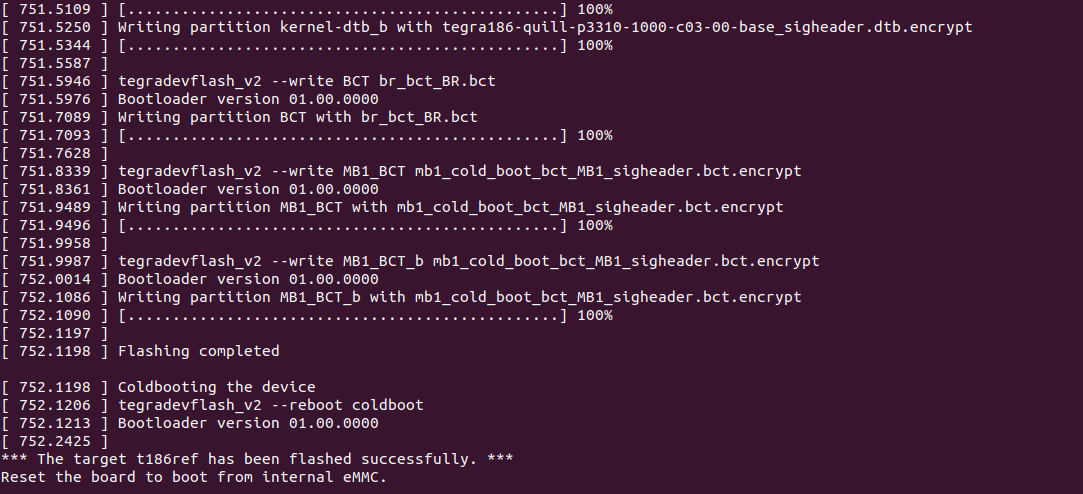
Installation
Wait for the installer to check its integrity.
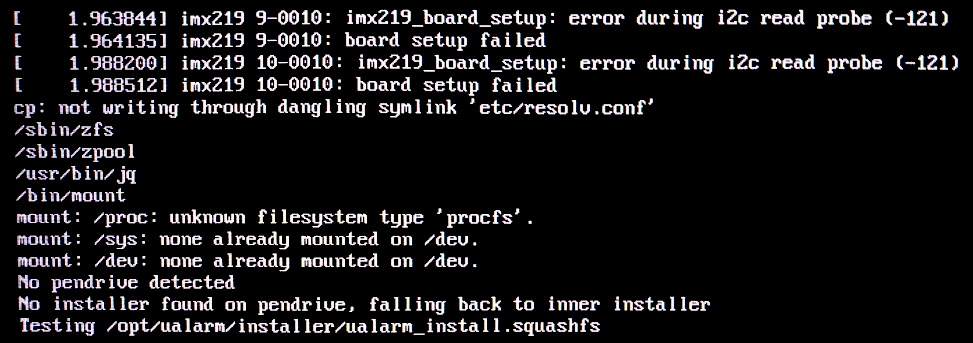
a. If you had previously installed and older version than 1.2.0 of Ultinous AI Suite on your machine, the installation might fail in one of two ways:


b. To remedy this, the old partitioning will have to be cleared on the ssd.
c. Note down your drive path from the line after
Executing /mnt/installer/ualarm_installer(in the example image, it's/dev/sda).d. Execute
wipefs -a <your drive path>thenreboot -f.f. The system will reboot and the installation will resume from step 1. If the problem still persists, please contact our support (support@ultinous.com).
Select Target Medium (hardware dependent)
In case you have multiple drives suitable for installation, select the desired SSD drive for the installation (see the images below). If your hardware configuration includes only one such drive, this step will not appear.
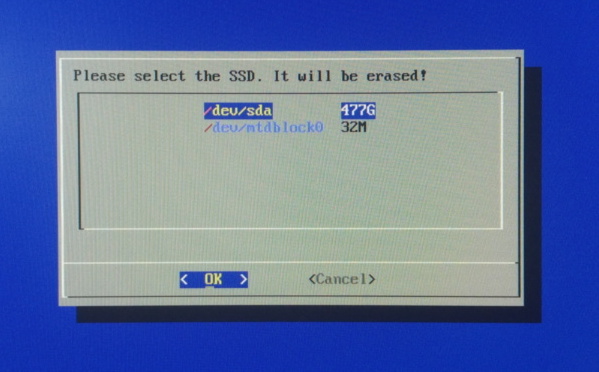
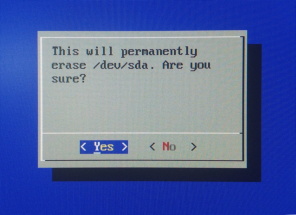
Wait for the installer to copy the necessary files. This step can take up to 5 minutes.
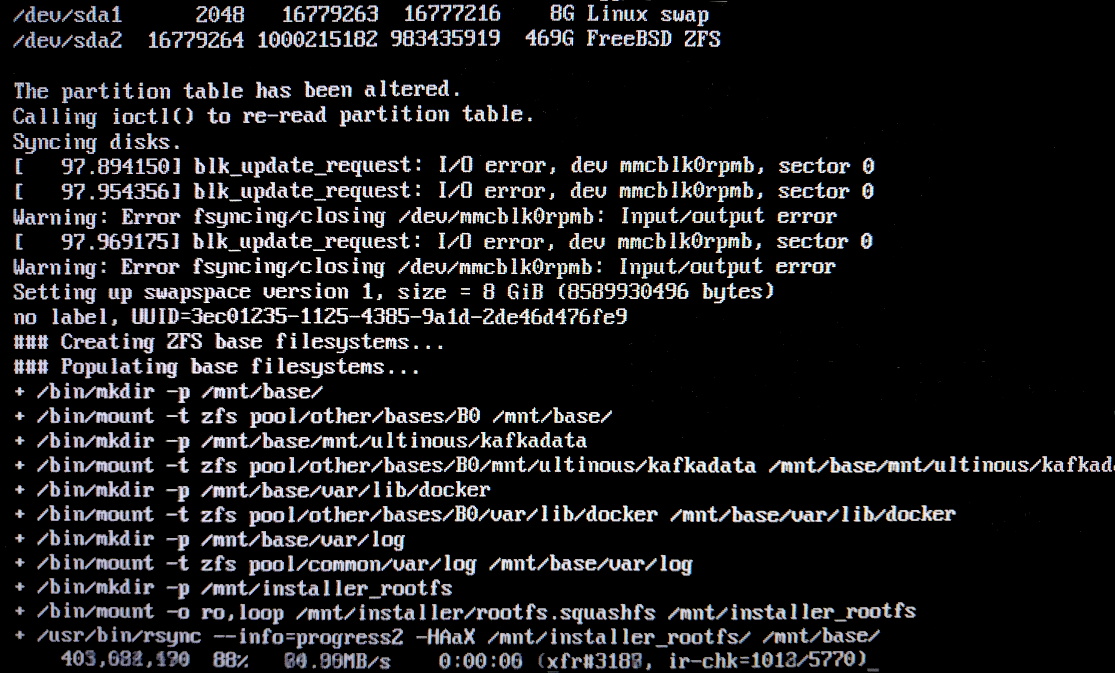
Wait for the installer to process the files. This step has no progress indication - it can take up to 5 minutes.

Wait for the system to reboot. You can prevent rebooting and optionally do an inspection if you press ENTER once you see a countdown from 15 seconds.

Wait for the machine to optimise AI models for the specific machine. It will have no progress indication and can take up to 30 minutes.

Installation is finished. The above notification is replaced with a standard login screen.

The web user interface will take an additional 2 minutes to be available.
The installation is now complete. To shutdown the device, short press and release the power button - do not long press it - then wait for the system to shut down. Alternatively you can proceed with the configuration.
Next steps
To configure Ultinous AI Suite, follow the steps described in the User's guide.